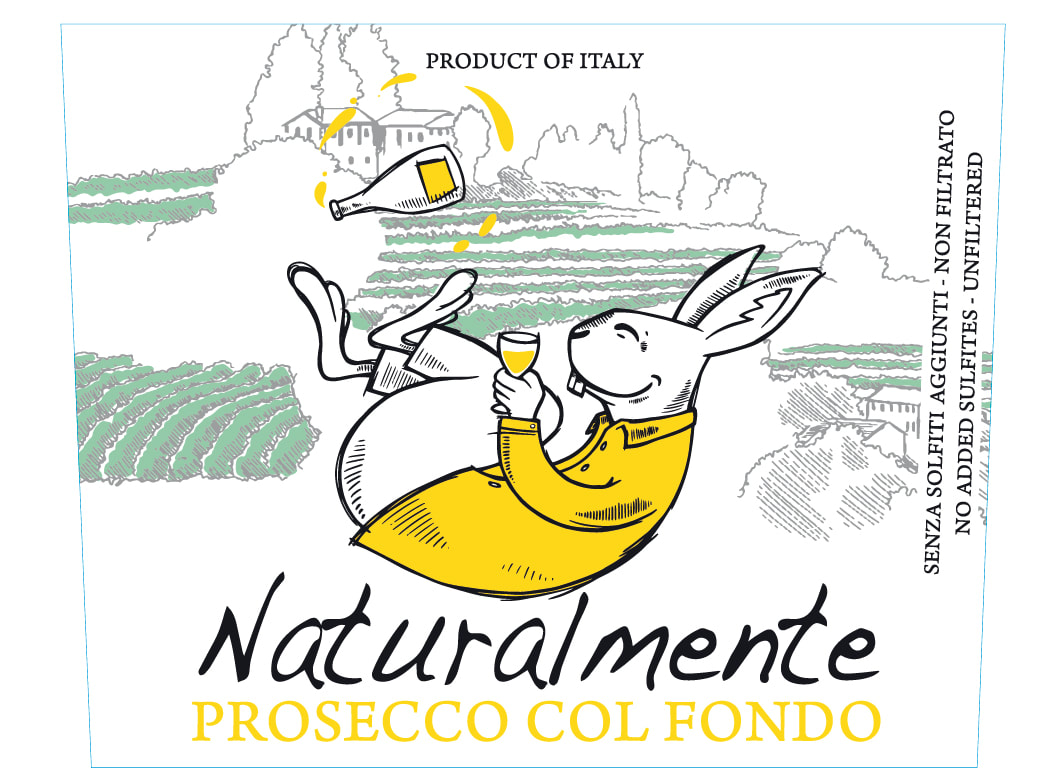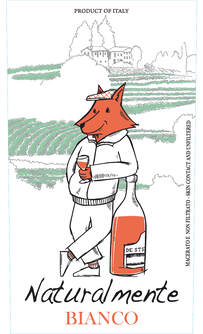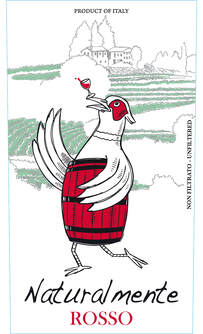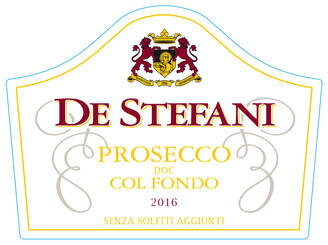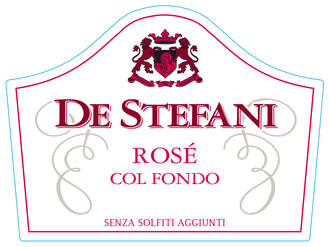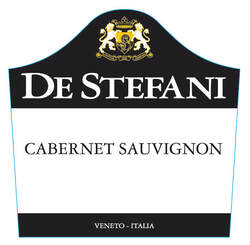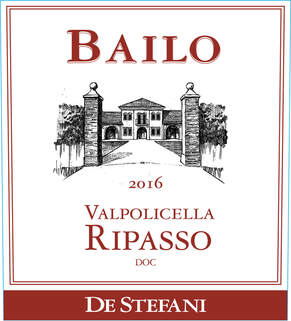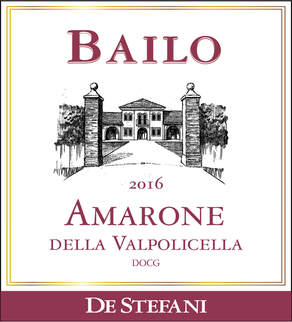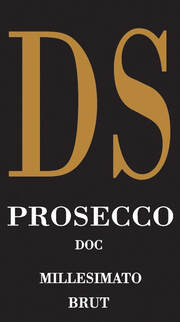Since their start in the later half of the 1800s, the De Stefani family of winemakers has crafted spectacular wines, and this tradition continues today under the experience of the family's 4th generation winemaker, Alessandro. In Refrontolo, a small hilly village between the two famous Prosecco towns of Conegliano and Valdobbiadene, the family began, and they have recently accrued two other vineyards for a combined 40 hectares of total estate. In 1971, Tiziano De Stefani (Alessandro's father) moved his family to the Fossalta di Piave where they could grow many different grapes on the clay soils of the old river plain as well as their esteemed Glera vineyards for Prosecco production. A complete dedication to practices that are as natural as possible means the estate is organically farmed (soon to be certified), they rely only on naturally occurring yeasts, and never add sulfites during vinification (since 2009) to make beautiful wines from the many varietals that they have found in their unique terrain. De Stefani's Redentore label comes from the younger vines of the estate that will someday be destined to carry the house's flagship label. All the wines are vinified in the exact same way but bring incredible value to the estate as a whole. Since 2015, the Redentore wines are made with no additions of sulfites whatsoever and prove to be of the highest quality while showcasing mono-varieties of the estate.
|
|
|
DE STEFANI (& REDENTORE) - VIRTUAL VISIT
The following interview was recorded in the fall of 2020 during the Covid lockdown. These videos were intended to promote sales and create requests for samples during a time when promoting new wines was challenging. Although this promotion is over, the videos contain SO MUCH great content that we want to make it available to you.
To watch this Virtual Visit on YouTube - click HERE Pro-Tip: Underneath each video there is an expandable description (click Show More) where you will find 'time-stamps' that are quick-linked to particular topics throughout the video for easy navigation and quick information
The following interview was recorded in the fall of 2020 during the Covid lockdown. These videos were intended to promote sales and create requests for samples during a time when promoting new wines was challenging. Although this promotion is over, the videos contain SO MUCH great content that we want to make it available to you.
To watch this Virtual Visit on YouTube - click HERE Pro-Tip: Underneath each video there is an expandable description (click Show More) where you will find 'time-stamps' that are quick-linked to particular topics throughout the video for easy navigation and quick information
Naturalmente
|
naturalmente prosecco col fondo
100% glera The Naturalmente Prosecco Col Fondo pays homage to the way Prosecco was made long ago. Harvested from the estate’s organic and biodynamically farmed Glera fruit at the Pra’ Longo estate in Monastier di Treviso, the fruit is brought to the cellar for a soft pressing and begins its natural ferementation. After the initial fermentation in steel, the wine is bottled with its lees under the typical crown cap enclosure, including no preservatives or sulfites. From here, the wine undergoes its secondary fermentation in bottle, but is never disgorged before release. This is where this wine takes its name, “Col Fondo,” where the lees are ‘in the bottom.’ This traditional version of Prosecco gives the wine an incredible complexity, with lively and fragrant bread and yeasty notes, on top of the fresh and delicious apple fruit, citrus, and stone. |
naturalmente bianco
100% pinot grigio The Naturalmente Pinot Grigio is the winery’s most true to varietal expression of the Pinot Grigio variety. Focusing on all organic farming with biodynamic concepts as well, the grapes are harvested and brought to the winery for a natural fermentation with skins in concrete. A long skin maceration (about 30 days) that continues after fermentation has ceased is the reason for this delightfully textured and amber-colored wine. A year in 1,600L terracotta anfora passed with lees contact, before a light touch of sulfites is added before bottling with no filtration or fining. The result gives a gorgeous orange peel hue in the glass, and is packed with aromas of sweet apricots, ripe pears, and a mix of citrus fruits. The palate is long and persistent, with ample acidity to match the full texture that is naturally in the wine, and offers loads of stone fruits, light brown spices, and hints of sea air. A bottle to accompany many occasions and cuisines, this ‘orange’ wine will surely please and possibly surprise all those who sit at its table. |
naturalmente rosso
raboso & merlot The Naturalmente Rosso is made of two grapes that the winery loves and adores, and is able to bring their heritage and their passion together as one. Essentially half and half Merlot and Raboso, the Merlot is harvested about a month earlier than the Raboso in late September, and the wines are vinified separately until blended before bottling. Natural fermentation in concrete takes place for these grapes, and then it ages in used French barrique for around a year, before entering 1600L terracotta anfora for another year. The wine is blended without fining or filtration, and only a small amount of sulfites were used to preserve the final wine. An intense ruby color sits in the glass, and the aromas of this red are lively and full of red fruits like cherries, raspberries, and strawberries, while having an underlining of savory spice to accompany it all. In the mouth, the wine is fresh but quite smooth, with silky tannins, a lovely full texture, and a long finish of cherries and forest spice. |
De Stefani
|
de stefani prosecco col fondo
100% glera The Prosecco Col Fondo takes Prosecco all the way back to its roots. Harvested from the estate’s naturally farmed Glera fruit in the hills of Refrontolo, where the greatest grapes for Prosecco wine are grown, this wine undergoes its vinification in traditional Method Champenois. After the initial fermentation in steel, the wine is bottled with its lees under the typical crown cap enclosure, including no preservatives or sulfites. From here, the wine undergoes its secondary fermentation in bottle, but is never disgorged before release. This is where this wine takes its name, “Col Fondo,” where the lees are ‘in the bottom.’ This traditional version of Prosecco gives the wine an incredible complexity, with lively and fragrant bread and yeasty notes, on top of the fresh and delicious apple fruit, citrus, and stone. Being that this wine still contains its deposit of lees within the bottle, this Prosecco can be enjoyed by decanting the wine off of the deposit for a clear, sparkling wine, or the deposit can be left in the glass to add to the rich aromas and incredible texture on the palate. |
de stefani col fondo rosé
100% raboso The Rosé Col Fondo Frizzante takes bubble production in this area all the way back to its roots. Typically sparkling wines are made from the Glera grape to make Prosecco, and when using a red grape to make rosé, the name Prosecco is forfeited although the production methods can be the same. Here, 100% Raboso from the estate vines in the Piave Valley were used and underwent its vinification in traditional Method Champenois style. After the initial fermentation in steel, the wine is bottled with its lees under the typical crown cap enclosure, including no preservatives or sulfites. From here, the wine sees its secondary fermentation in bottle, but is never disgorged before release. This is where this wine takes its name, “Col Fondo,” where it is ‘on the lees.’ This pet nat style gives a wonderful creamy foam to the finished wine, shows a intense and lovely bread crust aroma, and a fresh and dry mouth full of fruit and character. Being that this wine still contains its deposit of lees within the bottle, this Prosecco can be enjoyed by decanting the wine off of the deposit for a clear, sparkling wine, or the deposit can be left in the glass to add to the rich aromas and incredible texture on the palate. |
de stefani cabernet sauvignon
100% cabernet sauvignon The De Stefani Cabernet Sauvignon is the perfect representation of what this estate can do in their natural vineyards in the Veneto. The fruit comes from the family’s ‘Le Ronche’ estate, located in Fossalta di Piave, which is rich with clay, and sees high temperatures in the summer to give it ample ripening time. Extremely low yields from careful vineyard management, create incredibly rich cabernet fruit which is harvested around the beginning of October. Both the initial and malolactic fermentations are carried out in stainless steel, before moved to French Allier oak barrique for 12 months. The final wine is so delicately balanced with fruit and spice, softened by the oak, and packed full of gripping structure. Supple and complex flavors resound through the long finish, calling for the assistance of delicious braised or roasted meats. |
Bailo & DS
|
bailo valpolicella ripasso
corvina, rondinella, corvinone The Bailo Valpolicella Ripasso is made from the traditional grapes of the area: Corvina, Corvinone, Rondinella, and Croatina. Low yielding vines that are full of healthy and robust grapes come to the cellar for a natural co-fermentation in concrete vats, and then continue to rest in tank until January. At this point, the remaining skins from the dried and fermented Amarone grapes are used to let this Valpolicella wine ‘re-pass’ over the skins to create the ‘Ripasso’ style wine, in order to gain depth and complexity from the older sibling’s rich and decadent fruit. The wine then sleeps for 18 months in 50/50 new and used French barrique until it sees a bit of sulfur and is bottled. Years of refinement took place in bottle and the wine is now starting in its window of opportunity for drinking. Aromas of black plum, toasted cedar, cinnamon, clove, and wet moss fill the glass, and lead to an elegant palate of pomegranate, black cherry, dried plums, and toast. The medium tannins coat the mouth at first, but smooth out from the juicy acidity, and long delicious finish. |
bailo amarone della valpolicella
corvina, rondinella, corvinone The Bailo Amarone della Valpolicella is made from the traditional grapes of the area: Corvina, Corvinone, Rondinella, and Croatina. At the very end of September, the best grapes were selected for this wine and began a 2 to 3 month drying process on straw mats in order to concentrate the natural sugars and complexities. Then, with all the grapes together, a natural co-fermentation took place in concrete vats before pressing and the remaining grape skins were used for the younger sibling wine to ‘re-pass’ through – creating the Ripasso. The Amarone wine went directly to new French barrique for a 24-month rest before it saw a small (and first) dose of sulfites, and was bottled, then laid to rest for several more years until its drinking window began. The finished wine is still only a baby in its life of aging, but once opened for an hour or so (decanting is recommended), rich and brooding aromas of black cherry, ripe plum, cedar box, tobacco, and wet forest earth begin to emerge. The palate is deep and complex, with each layer slowly unfolding like a pitch-black rose, full of floral black fruit, intense spice and earth, and clean fresh wood. |
'ds' prosecco
100% glera The Prosecco DOC Millesimato Brut is the winery’s newest value driven Prosecco from 100% estate Glera vines. The grapes are harvested from ‘cappuccina’ (double arched cane) trained vineyards, and come to the cellar for fermentation in tank after a soft pressing. The wine then continues to mature on its noble lees with frequent battonage in order to add great texture of the final bubbles. Second fermentation with a dosage of 8 grams of sugar per liter took place in closed tank via the Italian Method and the resulting sparkling wine is wonderfully fresh and vibrant on the nose with fresh pear and green apples, and with hints of lime zest. The mouthfeel is lovely and active with persistent bubbles, fresh ripe tree fruits, and hints of white flowers. |
